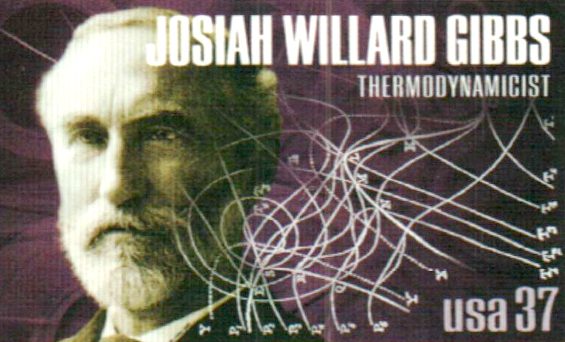American Scientists

2005 American Scientists
After World War II, von Neumann worked to develop large scale, high-speed electronic computers with stored programs. His design of the IAS computer – the von Neumann Architecture – became the model for most of its successors.
Feynman shared the 1965 Nobel Prize in Physics. His work on quantum electrodynamics described the interactions of charged, subatomic particles and electromagnetic fields. He invented “Feynman diagrams,” arrows and squiggles that show particle activity.
McClintock found that color changes in successive generations of maize were turned on or off by genetic “switches.” Moreover, these switches could move from one part of a chromosome to another. Her discovery was crucial to later genetic research.
In the age of steam, Gibbs formulated the laws of thermodynamics – the relationship between heat and other forms of energy. His rules had applications to chemistry, manufacturing, and engineering.

2008 American Scientists
Gerti Cori was the first female to earn a Nobel Prize for Physiology/Medicine in 1947. Working with her husband, Cori discovered how carbohydrates are metabolized in the body. The Cori Crater on the Moon was named for her.
Linus Pauling is considered by most to be the father of molecular biology. He earned two Nobel Prizes, one for chemistry in 1954 and one for Peace in 1962. The Linus Pauling Institute was started and later named after Pauling.
Astronomer Edwin Hubble forever changed the way we see our world. Before Hubble, it was thought that our Milky Way galaxy was the entire universe. Hubble’s research showed there are galaxies beyond our own. In 1990, the Hubble telescope was named after the distinguished astronomer.
John Bardeen’s development of the transistor has made possible the creation of almost every other modern electronic device from telephones to missiles. He earned Nobel Prizes in 1956 and 1972 for his world-changing contributions.

2011 American Scientists
Melvin Calvin, Asa Gray, Maria Goeppert Mayer, and Severo Ochoa are all featured on the 2011 American Scientists stamps. Three of them, like Curie, won the Nobel Prize in their respective fields. The fourth, Gray, lived in the 19th century, before the Nobel was established, but also enjoyed international renown for his work in botany. His books are still used today.
With tremendous dedication, these scientists opened doors for others to follow. Their persistence unlocked secrets of the workings of the world: from Calvin’s understanding of plants and energy, to Goeppert Mayer’s investigation of atomic particles. Gray’s manuals detailing plants are still relevant more than 160 years later, and Ochoa’s research into the building blocks of life marked a critical advance.
The stamps feature calculations and images relevant to the work that made each scientist famous. The researchers honored on these stamps left a lasting legacy in the quest for knowledge.

